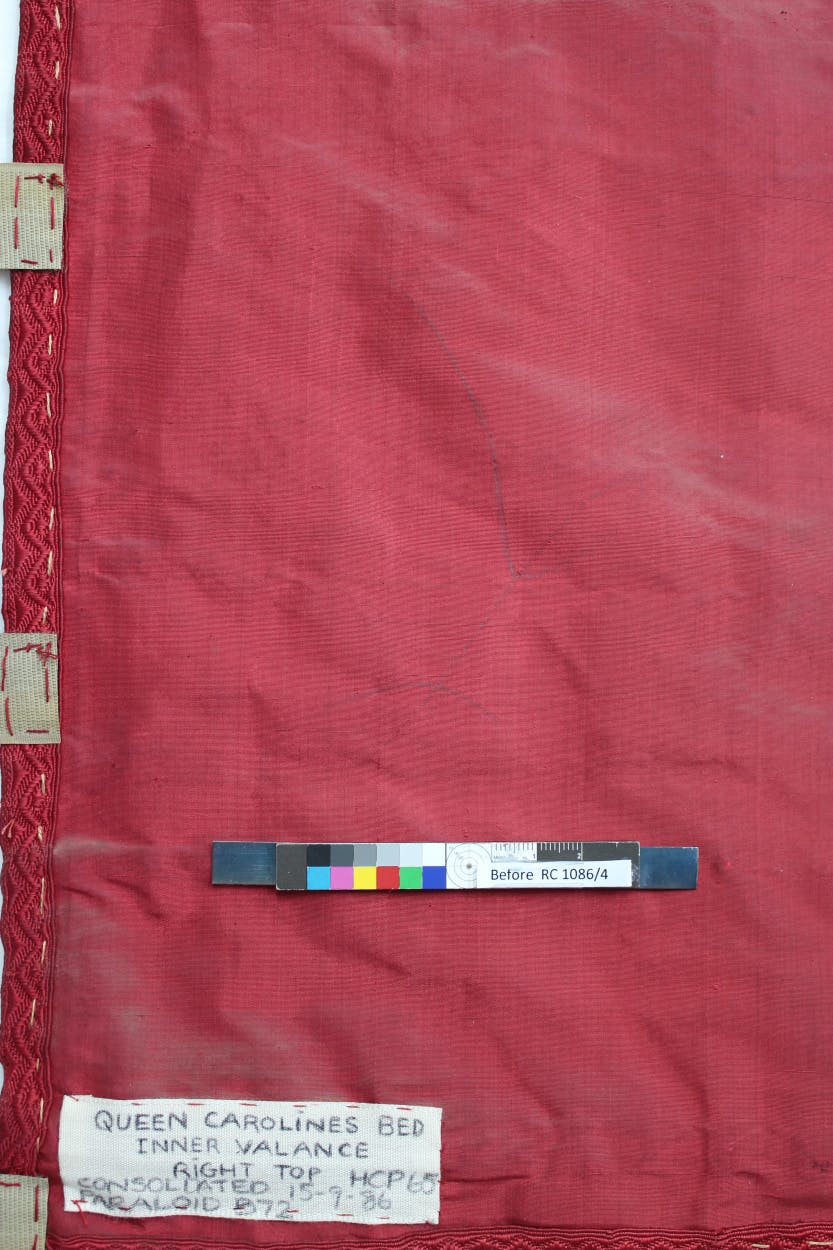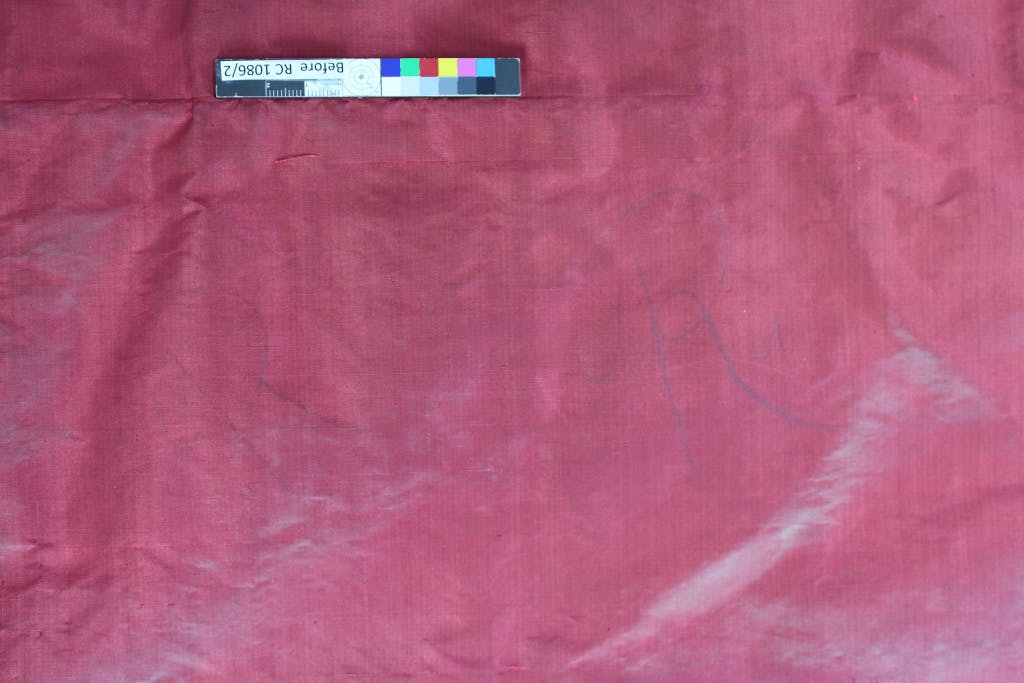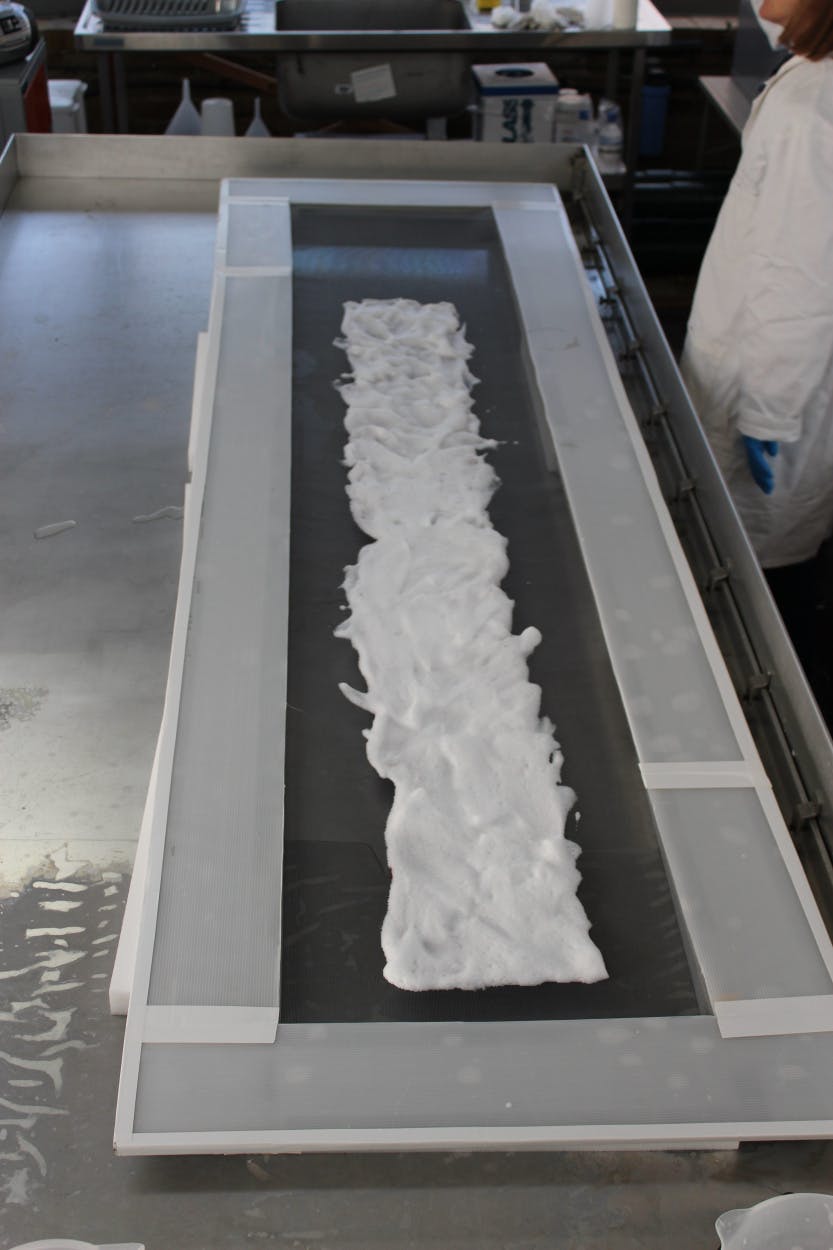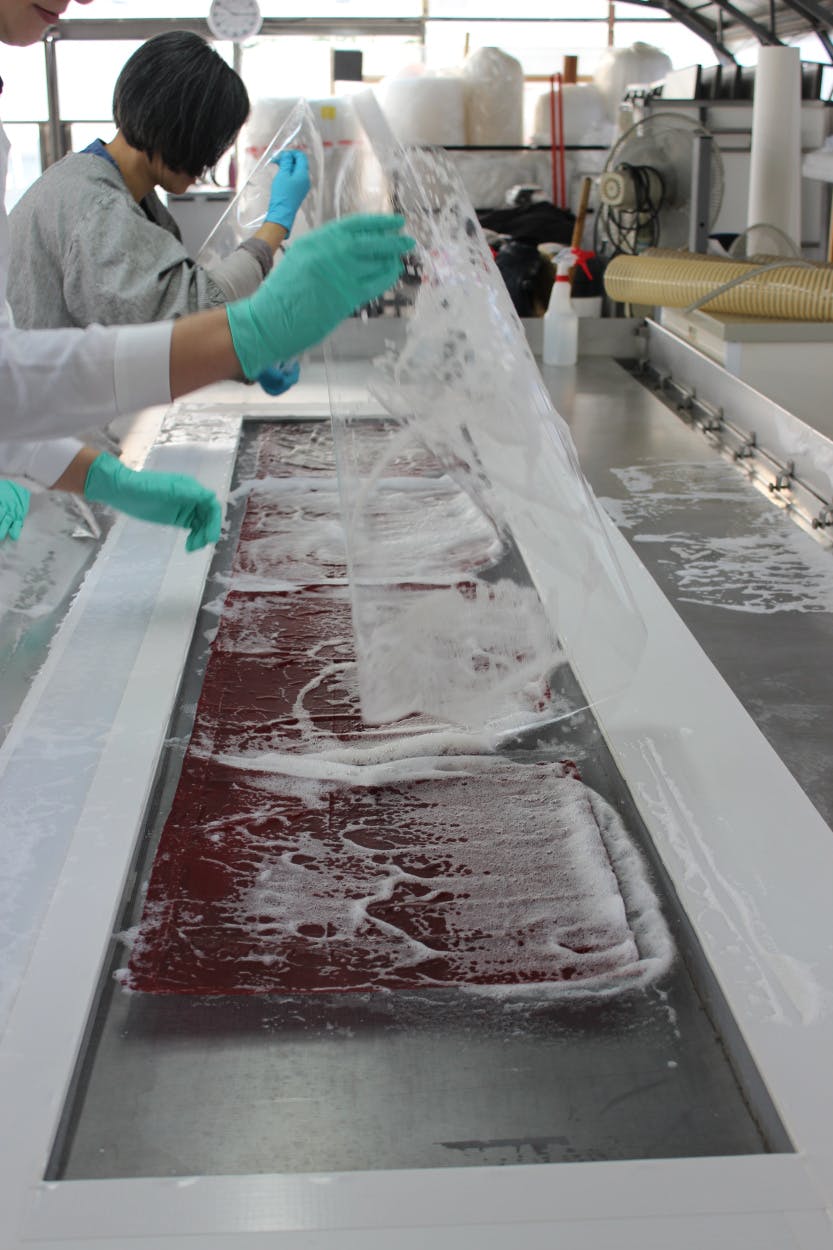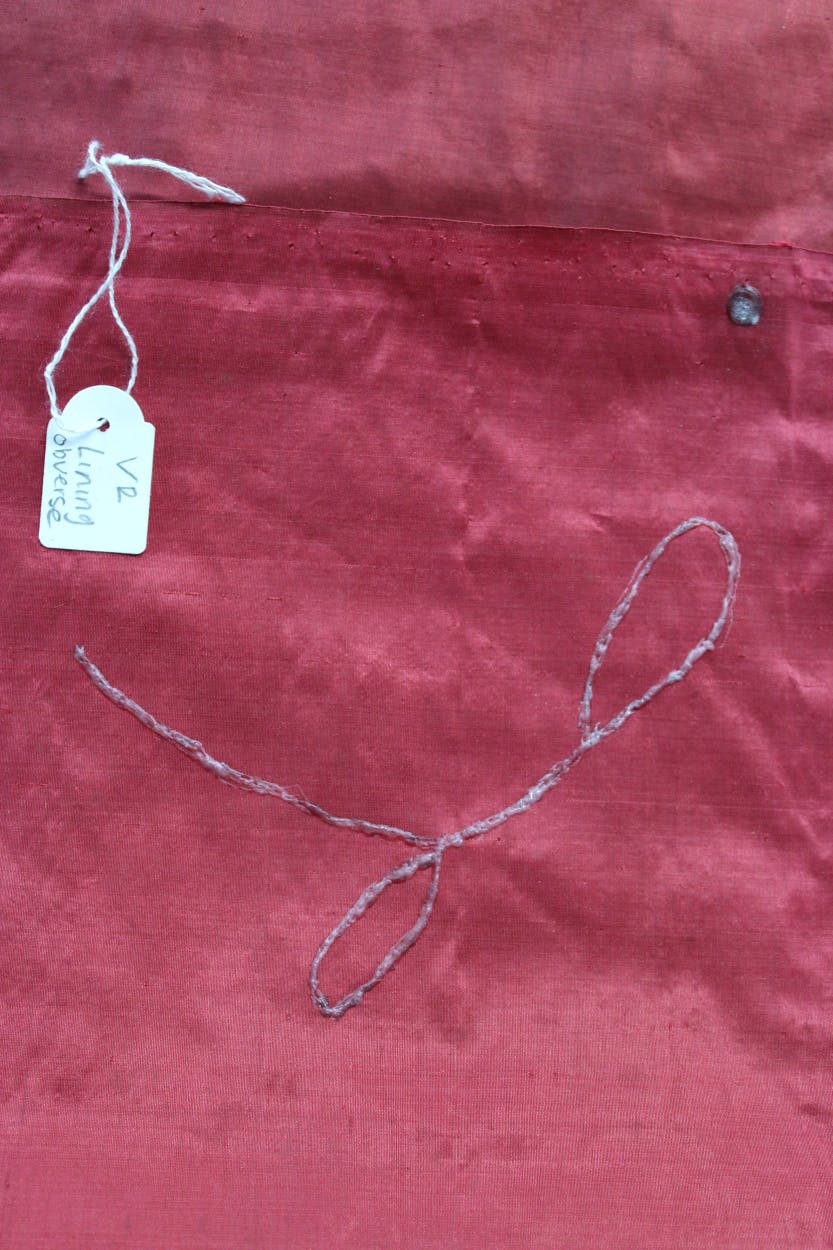A discovery on the lining: Secrets of A State Bed
Date: 08 January 2020
Author:
Kate French
Queen Caroline's state bed has three upper inner valances. These decorative drapes are attached to the inside the wooden bed frame, to hide the bed frame and give a decorative border to the tester or canopy. They are made from silk damask decorated with silk braid and lined with plain silk. Linings are not usually the most exciting or important part of a textile, but these ones turned out to be far more interesting than we thought.
Image: A diagram of Queen Caroline's state bed.

Unexpected discovery when the surface was cleaned
The valance linings were very dusty. Surface cleaning with a specialist vacuum cleaner and a soft brush was the first cleaning treatment we did. We do this to remove the dust particles that are often acidic and will damage the textile fibres over time. Once the dust was removed, we could clearly see a large L written in cursive script on one valance and an R on another.
As conservators, our aim is to preserve the whole history of the piece we are working on and these large letters are now part of its fascinating life. There were no historic records held at Hampton Court relating to these markings but it's likely to have been done so they could be put back in the right place. In fact it does show that at a later date, the valances had been swapped and relabelled. A fabric label had been stitched on making the right valance the left and vice-versa.
The discovery of the letters had an implication on the wet cleaning treatment
We looked at the letters under magnification to identify what had been used to write the letters. This unfortunately was not possible and taking a sample would damage the lining so that was not an option. The linings were acidic and very dirty and would benefit from wet cleaning. This removes the ingrained soiling, rehydrates the fibres, rebalances the PH level and improves the overall appearance. We had no way of knowing if wet cleaning would remove the markings and if ink had been used would it run?
Trialling a new approach to wet cleaning to suit the newly discovered historical evidence
Due to the benefits of wet cleaning we decided to go ahead with the treatment but to try a different method to accommodate the markings and the fragility of the linings. Our approach was to use detergent whisked into a stable shaving foam consistency as opposed to submerging the fabrics in water, a method we would usually use. This foam can separate and hold particles within the foam structure. The linings were placed on a fly net screen and the foam was placed on top. Using foam instead of a more traditional wash bath method greatly reduces handling.
Protecting the letters during the cleaning treatment
But how were we going to preserve the markings during the washing? We used a temporary barrier layer called Cyclododecane. CDC is a waxy white solid volatile binding medium. It can dissolve without leaving residues. This is particularly exciting for conservators because it temporarily binds localised areas and is fully reversible. It was applied to the letters in a molten state with a batik tool.
Post-wash technical analysis
Once the linings were fully dry, microscopy showed that they were visually cleaner, and the pH had risen to an acceptable level. It showed that a combination of the CDC barrier layer protecting the letters and the foam cleaning had cleaned the linings and preserved the letters. This is all now recorded in the documentation. In our next blog, we can reveal the hidden secrets of the bed's six mattresses.
Kate French
Textile Conservator
More from our blog

Six mattresses for a Queen: Secrets of a State Bed
30 January 2020
As conservation work continues on Queen Caroline's State bed, Conservator Beatrice Farmer shares discoveries on the lavish silk-covered mattresses, including one that appears to be an impostor. The bed is part of the Royal Collection, and can usually be found on display at Hampton Court Palace.

Conservation of an 18th century headboard: Secrets of a State Bed
13 March 2020
As part of our Secrets of a State Bed series, Conservator Viola Nicastro explains the process of conserving the headboard of Queen Caroline's State Bed, and reveals more of its secrets.

Conservation and discoveries in our paper collections
06 February 2020
We have around 25,000 works of art on paper in Historic Royal Palaces' collection. While many are on display, the vast majority are held in storage. These are delicate items and it's essential to conserve and store them correctly in order to preserve them for posterity.




